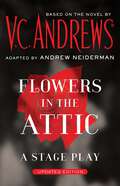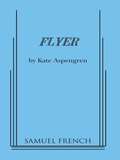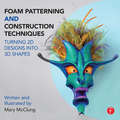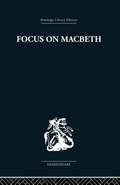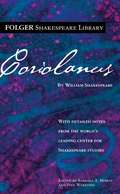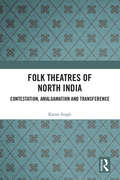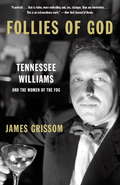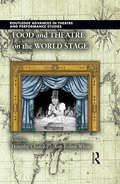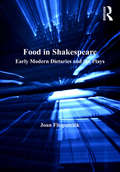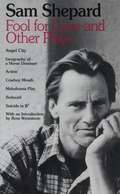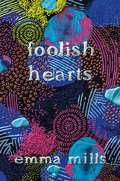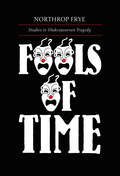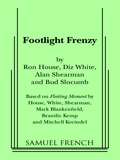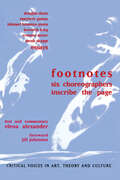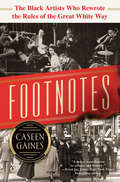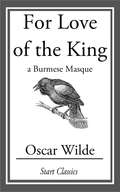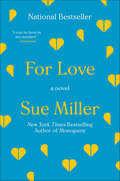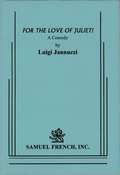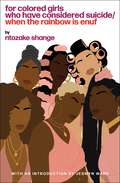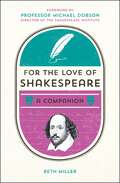- Table View
- List View
Flowers in the Attic: A Stage Play (Dollanganger)
by V. C. AndrewsThe only official stage play of V.C. Andrews's enduring classic of forbidden love--adapted by Andrew Neiderman (The Devil's Advocate). Experience in this new format the original story that captured the world's imagination and earned V.C. Andrews a fiercely devoted readership.At the top of the stairs there are four secrets hidden. Blond, beautiful, innocent, and struggling to stay alive . . . They were a perfect family, golden and carefree--until a heartbreaking tragedy shattered their happiness. Now, for the sake of an inheritance that will ensure their future, the children must be hidden away out of sight, as if they never existed. Kept on the top floor of their grandmotherds vast mansion, their loving mother assures them it will be just for a little while. But as brutal days swell into agonizing months and years, Cathy, Chris, and twins Cory and Carrie, realize their survival is at the mercy of their cruel and superstitious grandmother . . . and this cramped and helpless world may be the only one they ever know.Book One of the Dollanganger series, the sequels include Petals in the Wind, If There Be Thorns, Seeds of Yesterday, and Garden of Shadows. Then experience the attic from Christopher's point of view in Christopher's Diary: Secrets of Foxworth and Christopher's Diary: Echoes of Dollanganger.
Flowers in the Attic: A Stage Play (Dollanganger)
by V.C. AndrewsA Simon & Schuster eBook. Simon & Schuster has a great book for every reader.
Flyer
by Kate AspengrenDrama / 4 m., 5 f. (to play 21 roles). / Unit set. / While the Project Mercury astronauts carried America's hopes and dreams into space, NASA was busy training another elite corps of pilots, some with more flight experience than John Glenn and company. None of this group soared into space; they were women and here is their story. Flyer focuses on the hopes and dreams of one young pilot in particular. Fran Douglas rises above family scorn and her fiancee's condescension to join the women's corps. Action scenes involving NASA, Congress and Fran's family are intertwined with dream sequences about an intrepid black barnstormer, Bessie Coleman, who died in the 1920s performing an aerial feat. Bessie warns Fran about the many obstacles she will have to overcome to achieve her dream, a dream left unfulfilled when NASA pulled the plug on training women for space flight. / "This story needed to be told and Ms. Aspengren tells it brilliantly." The Westsider.
Foam Patterning and Construction Techniques: Turning 2D Designs into 3D Shapes
by Mary McClungFoam Patterning and Construction Techniques: Turning 2D Designs into 3D Shapes explains how to create your theatrical prop, puppet, or costume design using the unique and tricky medium of foam. Step-by-step instructions, photographs, and explanations illustrate how to translate your design from paper to reality by creating custom "skin" patterns, followed by creation of a foam mockup. The book details how to bring your project to life with varied finishing techniques, including using fur and fabric coverings and dying and painting foam. Numerous supplies, tools, and safety procedures and protocols are also covered.
Focus on Macbeth
by John Russell BrownFirst published in 1982. Macbeth exercises a strange influence over readers and theatre audiences: the words of the text offer no easy clue to meaning or significance and in dramatic structure the play is very different from other Shakespearean tragedies. Many kinds of study are needed in order to understand the tragedy of Macbeth and this book provides a wide range of studies that respect the individuality of the text and examine it from different viewpoints. Contents include: Themes and Structure; Characterization and Narrative, Visual Effects, Performance in the Eighteenth, Nineteenth and Twentieth Centuries; Historical and Political Background; Role of Witchcraft; Game Theory. Contributors include: John Russell Brown, Derek Russell Davis, Gareth Lloyd Evans, R A Foakes, Michael Goldman, Robin Grove, Peter Hall, Michael Hawkins, Brian Morris, D J Palmer, Marvin Rosenberg and Peter Stallybrass.
Folger Shakespeare Library: Coriolanus
by William Shakespeare Barbara A. Mowat Paul WerstineThe Enriched Classics series offers readers such features as: • A concise introduction that gives the reader important background information • A chronology of the author’s life and work • A timeline of significant events that provides the book’s historical context • An outline of key themes and plot points to help guide the reader’s own interpretations • Detailed explanatory notes • Critical analysis, including contemporary and modern perspectives on the work • Discussion questions to promote lively classroom and book group interaction • A list of recommended related books and films to broaden the reader’s experience
Folk Theatres of North India: Contestation, Amalgamation and Transference
by Karan SinghThis book examines folk theatres of North India as a unique performative structure, a counter stream to the postulations of Sanskrit and Western realistic theatre. In focusing on their historical, social and cultural imprints, it explores how these theatres challenge the linearity of cultural history and subvert cultural hegemony. The book looks at diverse forms of theatre such as svangs, nautanki, tamasha, all with conventions like open performative space, free mingling of spectators and actors, flexibility in roles and genres, etc. It discusses the genesis, history and the independent trajectory of folk theatres; folk theatre and Sanskrit dramaturgy; cinematic legacy; and theatrical space as performance besides investigating causes, inter-relations within socio-cultural factors, and the performance principles underlying them. It shows how these theatres effectively contest delimitation of human creative impulses (as revealed in classical Sanskrit theatre) from structuring as also of normative impulses of religion and culture, while amalgamating influences from Western theatre, newly-rising religious reform movements of 19th century India, tantra and Bhakti. It further highlights their ability to adapt and reinvent themselves in accordance with spatial and temporal transformations to constitute an important anthropological layer of Indian society. Comprehensive and empirically rich, this book will be an essential read for scholars and researchers of cultural studies, theatre, film and performance studies, sociology, political studies, popular culture, and South Asian studies.
Follies of God
by James GrissomAn extraordinary book; one that almost magically makes clear how Tennessee Williams wrote; how he came to his visions of Amanda Wingfield, his Blanche DuBois, Stella Kowalski, Alma Winemiller, Lady Torrance, and the other characters of his plays that transformed the American theater of the mid-twentieth century; a book that does, from the inside, the almost impossible--revealing the heart and soul of artistic inspiration and the unwitting collaboration between playwright and actress, playwright and director.At a moment in the life of Tennessee Williams when he felt he had been relegated to a "lower artery of the theatrical heart," when critics were proclaiming that his work had been overrated, he summoned to New Orleans a hopeful twenty-year-old writer, James Grissom, who had written an unsolicited letter to the great playwright asking for advice. After a long, intense conversation, Williams sent Grissom on a journey on the playwright's behalf to find out if he, Tennessee Williams, or his work, had mattered to those who had so deeply mattered to him, those who had led him to what he called the blank page, "the pale judgment." Among the more than seventy giants of American theater and film Grissom sought out, chief among them the women who came to Williams out of the fog: Lillian Gish, tiny and alabaster white, with enormous, lovely, empty eyes ("When I first imagined a woman at the center of my fantasia, I . . . saw the pure and buoyant face of Lillian Gish. . . . [She] was the escort who brought me to Blanche") . . . Maureen Stapleton, his Serafina of The Rose Tattoo, a shy, fat little girl from Troy, New York, who grew up with abandoned women and sad hopes and whose job it was to cheer everyone up, goad them into going to the movies, urge them to bake a cake and have a party. ("Tennessee and I truly loved each other," said Stapleton, "we were bound by our love of the theater and movies and movie stars and comedy. And we were bound to each other particularly by our mothers: the way they raised us; the things they could never say . . . The dreaming nature, most of all") . . . Jessica Tandy ("The moment I read [Portrait of a Madonna]," said Tandy, "my life began. I was, for the first time . . . unafraid to be ruthless in order to get something I wanted") . . . Kim Stanley . . . Bette Davis . . . Katharine Hepburn . . . Jo Van Fleet . . . Rosemary Harris . . . Eva Le Gallienne ("She was a stone against which I could rub my talent and feel that it became sharper") . . . Julie Harris . . . Geraldine Page ("A titanic talent") . . . And the men who mattered and helped with his creations, including Elia Kazan, José Quintero, Marlon Brando, John Gielgud . . . James Grissom's Follies of God is a revelation, a book that moves and inspires and uncannily catches that illusive "dreaming nature."From the Hardcover edition.
Follies of God: Tennessee Williams and the Women of the Fog
by James GrissomAn extraordinary book; one that almost magically makes clear how Tennessee Williams wrote; how he came to his visions of Amanda Wingfield, his Blanche DuBois, Stella Kowalski, Alma Winemiller, Lady Torrance, and the other characters of his plays that transformed the American theater of the mid-twentieth century; a book that does, from the inside, the almost impossible--revealing the heart and soul of artistic inspiration and the unwitting collaboration between playwright and actress, playwright and director.At a moment in the life of Tennessee Williams when he felt he had been relegated to a "lower artery of the theatrical heart," when critics were proclaiming that his work had been overrated, he summoned to New Orleans a hopeful twenty-year-old writer, James Grissom, who had written an unsolicited letter to the great playwright asking for advice. After a long, intense conversation, Williams sent Grissom on a journey on the playwright's behalf to find out if he, Tennessee Williams, or his work, had mattered to those who had so deeply mattered to him, those who had led him to what he called the blank page, "the pale judgment." Among the more than seventy giants of American theater and film Grissom sought out, chief among them the women who came to Williams out of the fog: Lillian Gish, tiny and alabaster white, with enormous, lovely, empty eyes ("When I first imagined a woman at the center of my fantasia, I . . . saw the pure and buoyant face of Lillian Gish. . . . [She] was the escort who brought me to Blanche") . . . Maureen Stapleton, his Serafina of The Rose Tattoo, a shy, fat little girl from Troy, New York, who grew up with abandoned women and sad hopes and whose job it was to cheer everyone up, goad them into going to the movies, urge them to bake a cake and have a party. ("Tennessee and I truly loved each other," said Stapleton, "we were bound by our love of the theater and movies and movie stars and comedy. And we were bound to each other particularly by our mothers: the way they raised us; the things they could never say . . . The dreaming nature, most of all") . . . Jessica Tandy ("The moment I read [Portrait of a Madonna]," said Tandy, "my life began. I was, for the first time . . . unafraid to be ruthless in order to get something I wanted") . . . Kim Stanley . . . Bette Davis . . . Katharine Hepburn . . . Jo Van Fleet . . . Rosemary Harris . . . Eva Le Gallienne ("She was a stone against which I could rub my talent and feel that it became sharper") . . . Julie Harris . . . Geraldine Page ("A titanic talent") . . . And the men who mattered and helped with his creations, including Elia Kazan, José Quintero, Marlon Brando, John Gielgud . . . James Grissom's Follies of God is a revelation, a book that moves and inspires and uncannily catches that illusive "dreaming nature."
Food and Theatre on the World Stage (Routledge Advances in Theatre & Performance Studies)
by Ann Folino White Dorothy ChanskyPutting food and theatre into direct conversation, this volume focuses on how food and theatre have operated for centuries as partners in the performative, symbolic, and literary making of meaning. Through case studies, literary analyses, and performance critiques, contributors examine theatrical work from China, Japan, India, Greece, Italy, France, Germany, England, the United States, Chile, Argentina, and Zimbabwe, addressing work from classical, popular, and contemporary theatre practices. The investigation of uses of food across media and artistic genres is a burgeoning area of scholarly investigation, yet regarding representation and symbolism, literature and film have received more attention than theatre, while performance studies scholars have taken the lead in examining the performative aspects of food events. This collection looks across dramatic genres, historical periods, and cultural contexts, and at food in all of its socio-political, material complexity to examine the particular problems and potentials of invoking and using food in live theatre. The volume considers food as a transhistorical, global phenomenon across theatre genres, addressing the explosion of food studies at the end of the twentieth century that has shown how food is a crucial aspect of cultural identity.
Food in Shakespeare: Early Modern Dietaries and the Plays (Literary And Scientific Cultures Of Early Modernity Ser.)
by Joan FitzpatrickA study of common and exotic food in Shakespeare's plays, this is the first book to explore early modern English dietary literature to understand better the significance of food in Shakespearean drama. Food in Shakespeare provides for modern readers and audiences an historically accurate account of the range of, and conflicts between, contemporary ideas that informed the representations of food in the plays. It also focuses on the social and moral implications of familiar and strange foodstuff in Shakespeare's works. This new approach provides substantial fresh readings of Hamlet, Macbeth, As you Like It, The Winter's Tale, Henry IV Parts 1 and 2, Henry V, Titus Andronicus, Coriolanus, Pericles, Timon of Athens, and the co-authored Sir Thomas More. Among the dietaries explored are Andrew Boorde's A Compendyous Regyment or a Dyetary of Healthe (1547), William Bullein's The Gouernement of Healthe (1595), Thomas Elyot's The Castle of Helthe (1595) and Thomas Cogan's The Hauen of Health (1636). These dieteries were republished several times in the early modern period; together they typify the genre's condemnation of surfeit and the tendency to blame human disease on feeding practices. This study directs scholarly attention to the importance of early modern dietaries, analyzing their role in wider culture as well as their intersection with dramatic art. In the dietaries food and drink are indices of one's position in relation to complex ideas about rank, nationality, and spiritual well-being; careful consumption might correct moral as well as physical shortcomings. The dietaries are an eclectic genre: some contain recipes for the reader to try, others give tips on more general lifestyle choices, but all offer advice on how to maintain good health via diet. Although some are more stern and humourless than others, the overwhelming impression is that of food as an ally in the battle against disease and ill-health as well as a potential enemy.
Fool for Love and Other Plays
by Sam Shepard Ross WetzsteonHere are eight of Pulitzer-prize winning Sam Shepard's most stunning plays. This brilliant American dramatist creates whatThe New Yorker dubbed "Shepard Country"--a landscape of the imagination, a unique theatrical experience that captures our culture and consciouness, our fears and fantasies. The collection includes: FOOL FOR LOVE * ANGEL CITY * GEOGRAPHY OF A HORSE DREAMER * ACTION * COWBOY MOUTH * MELODRAMA PLAY * SEDUCED * SUICIDE IN BB. With an Introduction by Ross Wetzsteon.
Foolish Hearts
by Emma MillsWhen Claudia accidentally eavesdrops on the epic breakup of Paige and Iris, the it-couple at her school, she finds herself in hot water with prickly, difficult Iris. Thrown together against their will in the class production of A Midsummer Night's Dream, along with the goofiest, cutest boy Claudia has ever known, Iris and Claudia are in for an eye-opening senior year. Smart, funny, and thoroughly, wonderfully flawed, Claudia navigates a world of intense friendships and tentative romance in this book about expanding your horizons, allowing yourself to be vulnerable, and accepting—and loving—people for who they really are.
Fools of Time: Studies in Shakespearean Tragedy
by Northrop FryeIn Dr. Frye's view, 3 general types can be distinguished in Shakespearean tragedy: the tragedy of order, the tragedy of passion, and the tragedy of isolation, in all of which a pattern of "being in time" shapes the action.
Fools of Time: Studies in Shakespearean Tragedy
by Northrop FryeIn the Alexander Lectures for 1965-66 at the University of Toronto, Dr. Frye describes the basis of the tragic vision as "being in time," in which death as "the essential event that gives shape and form to life ... defines the individual, and marks him off from the continuity of life that flows indefinitely between the past and the future." In Dr. Frye's view, three general types can be distinguished in Shakespearean tragedy, the tragedy of order, the tragedy of passion, and the tragedy of isolation, in all of which a pattern of "being in time" shapes the action. In the first type, of which Julius Caesar, Macbeth, and Hamlet are examples, a strong ruler is killed, replaced by a rebel-figure, and avenged by a nemesis-figure; in the second, represented by Romeo and Juliet, Anthony and Cleopatra, and Troilus and Cressida, authority is split and the hero is destroyed by a conflict between social and personal loyalties; and in the third, Othello, King Lear, and Timon of Athens, the central figure is cut off from his world, largely as a result of his failure to comprehend the dynamics of that world. What all these plays show us, Dr. Frye maintains, is "the impact of heroic energy on the human situation" with the result that the "heroic is normally destroyed ... and the human situation goes on surviving." Fools of Time will be welcomed not only by many scholars who are familiar with Dr. Frye's keen critical insight but also by undergraduates, graduates, high-school and university teachers who have long valued his work as a means toward a firmer grasp and deeper understanding of English literature.
Footlight Frenzy
by Ron HouseFarce \ 4 m., 2 f. \ Var. simple sets. \ In a desperate attempt to save their bankrupt "School for Unusual Children", an inexperienced PTA group valiantly mounts an ambitious benefit play, written by a has been Broadway director. His near hysterical direction and the group's questionable talent turn the production into a shambles. The scenes shift back and forth from the real tribulations of the performers to the play they are "performing", and it is hard to tell which is sillier. This is fast and furious theatrical fun of the first order, with us watching the fun from the "back" of the stage! This fast moving slapstick farce is from the creators of Bullshot Crummond and El Grande de Coca Cola!
Footnotes: Six Choreographers Inscribe the Page (Critical Voices in Art, Theory and Culture)
by Kenneth King Jill Johnston Douglas Dunn Elena Alexander Marjorie Gamso Ishmael Houston-Jones Yvonne Meier Sarah SkaggsFirst Published in 1998. Routledge is an imprint of Taylor & Francis, an informa company.
Footnotes: The Black Artists Who Rewrote the Rules of the Great White Way
by Caseen GainesThe triumphant story of how an all-Black Broadway cast and crew changed musical theatre—and the world—forever."This musical introduced Black excellence to the Great White Way. Broadway was forever changed and we, who stand on the shoulders of our brilliant ancestors, are charged with the very often elusive task of carrying that torch into our present."—Billy Porter, Tony, Grammy, and Emmy Award-winning actorWhen the curtain rose on Shuffle Along in 1921, the first all-Black musical to succeed on Broadway, no one was sure if America was ready for a show featuring nuanced, thoughtful portrayals of Black characters—and the potential fallout was terrifying. But from the first jazzy, syncopated beats of composers Noble Sissle and Eubie Blake, New York audiences fell head over heels.Footnotes is the story of how Sissle and Blake, along with comedians Flournoy Miller and Aubrey Lyles, overcame poverty, racism, and violence to harness the energy of the Harlem Renaissance and produce a runaway Broadway hit that launched the careers of many of the twentieth century's most beloved Black performers. Born in the shadow of slavery and establishing their careers at a time of increasing demands for racial justice and representation for people of color, Sissle, Blake, Miller, and Lyles broke down innumerable barriers between Black and white communities at a crucial point in our history.Author and pop culture expert Caseen Gaines leads readers through the glitz and glamour of New York City during the Roaring Twenties to reveal the revolutionary impact one show had on generations of Americans, and how its legacy continues to resonate today.Praise for Footnotes:"A major contribution to the culture."—Brian Jay Jones, New York Times bestselling author of Jim Henson: The Biography"Shuffle Along was the first of its kind when the piece arrived on Broadway. This musical introduced Black excellence to the Great White Way. Broadway was forever changed and we, who stand on the shoulders of our brilliant ancestors, are charged with the very often elusive task of carrying that torch into our present. I am humbled to have been part of the short-lived 2016 historical telling of how far we've come, starring as Aubrey Lyles in Shuffle Along, or, the Making of the Musical Sensation of 1921 and All That Followed—and happy that Footnotes further secures his place in history."—Billy Porter, Tony, Grammy, and Emmy Award-winning actor
For Love of the King: A Burmese Masque
by Oscar WildeThe very interesting and richly coloured masque or pantomimic play which is here printed in book form for the first time, was invented sometime in 1894 or possibly a little earlier. It was written, not for publication, but as a personal gift to the author's friend and friend of his family, Mrs. Chan Toon.
For Love: A Novel
by Sue Miller"A tour de force by any standard." —Newsweek"Miller writes with wisdom, compassion, and an almost palpable sense of reality about the ambiguous and difficult choices that . . . at one time or another, life demands of us." —Atlanta Journal-ConstitutionA convergence of family and friends stirs memories of the past in New York Times bestselling author Sue Miller's novel about the beautiful, raging, and tragic yearning for romantic love.After years of lives lived apart, Lottie Gardner, her brother, Cameron, and their old friend Elizabeth reunite in their hometown of Cambridge, Massachusetts. Lottie has arrived to settle the estate of her elderly mother in decline. It's also a chance to slip away from a passionless marriage in jeopardy. What she longs for is the kind of heedless romance she sees in her brother's rekindled fling with his childhood sweetheart. But Elizabeth is in the throes of a marital crisis of her own. And when blind desire culminates in a senseless tragedy, Lottie, Cameron, and Elizabeth must confront the choices they've made for love. Gripping, emotional, and unexpected, For Love explores the inevitable reconciliation of the life you dream of when young and hopeful with the reality of the one you must abide.
For The Love Of Juliet
by Luigi JannuzziComedy / 2m, 2f / Interior / Here is a whimsical romantic comedy by the popular author of Night of the Foolish Moon , A Bench at the Edge, and other plays. Julie has dedicated herself to a muse named Romeo who is grooming Julie for a Broadway debut. Alex, the irresponsible love of Julie’s life returns from a five year voyage to find himself and now he wants to recapture Julie’s heart. Will Julie choose the imaginary man or the real man? And are imaginary men more helpful and fun?
For colored girls who have considered suicide/When the rainbow is enuf
by Ntozake ShangeNtozake Shange&’s classic, award-winning play encompassing the wide-ranging experiences of Black women, now with introductions by two-time National Book Award winner Jesmyn Ward and Broadway director Camille A. Brown.From its inception in California in 1974 to its Broadway revival in 2022, the Obie Award–winning for colored girls who have considered suicide/when the rainbow is enuf has excited, inspired, and transformed audiences all over the country for nearly fifty years. Passionate and fearless, Shange&’s words reveal what it meant to be a woman of color in the 20th century. First published in 1975, when it was praised by The New Yorker for &“encompassing…every feeling and experience a woman has ever had,&” for colored girls who have considered suicide/when the rainbow is enuf will be read and performed for generations to come. Now with new introductions by Jesmyn Ward and Broadway director Camille A. Brown, and one poem not included in the original, here is the complete text of a groundbreaking dramatic prose poem that resonates with unusual beauty in its fierce message to the world.
For the Love of Shakespeare: A Companion
by Beth MillerThere’s never been a better time to take a fresh look at William Shakespeare’s eternal works. His plays and poems continue to surprise, inspire, console and delight us. Whether you’re a lifelong lover of the Bard or a curious newcomer to his world, this companion will lift the curtain on Britain’s greatest dramatist.
For the Love of Shakespeare: A Companion
by Beth MillerThere’s never been a better time to take a fresh look at William Shakespeare’s eternal works. His plays and poems continue to surprise, inspire, console and delight us. Whether you’re a lifelong lover of the Bard or a curious newcomer to his world, this companion will lift the curtain on Britain’s greatest dramatist.

